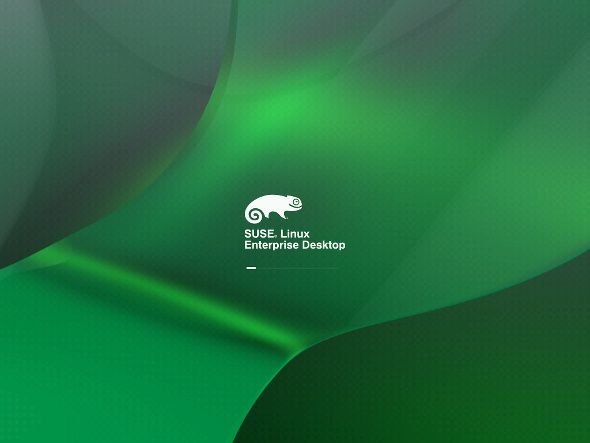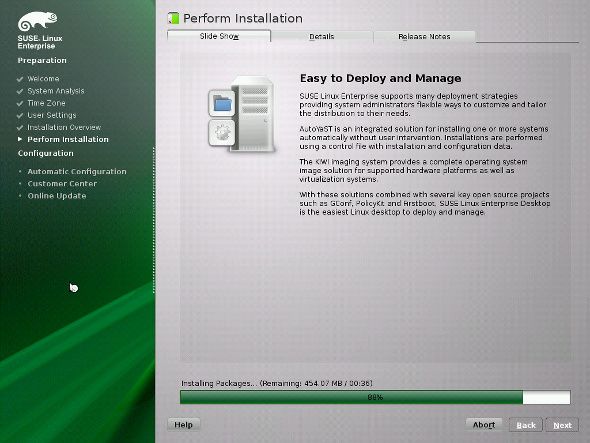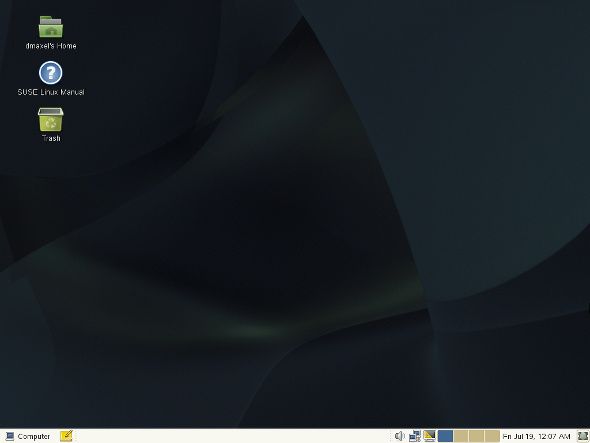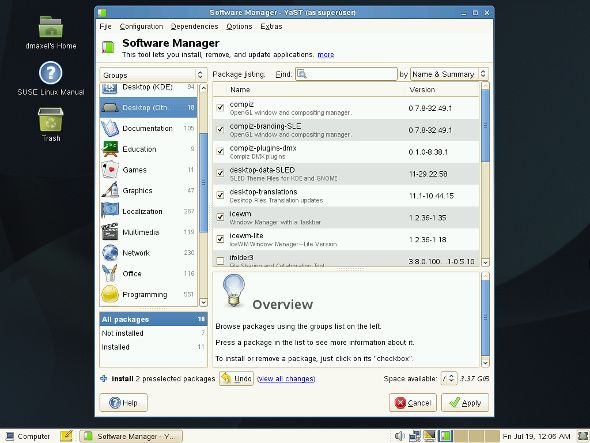Recently, I took a closer look at Red Hat Enterprise Linux, or "RHEL", to see how good of an enterprise desktop operating system it really is. I found that it's a top quality product, and Fedora users would be extremely familiar with it (no surprise there). However, Red Hat isn't the only company in the Linux enterprise desktop market -- there's also SUSE.
While aiming towards the same goals, SUSE Linux Enterprise Desktop, or "SLED" which costs $120 for a one-year subscription, and offers different technologies and software to get the job done. But just what can SLED offer, and how is it different to Red Hat's offering?
Getting the Evaluation Copy and Installation
From the start, getting an evaluation copy of SUSE Linux Enterprise Desktop was easier because, unlike Red Hat, you don't need to be associated with a business or enterprise to be eligible. In fact, all you need to do is visit this site and request an evaluation copy. You'll then be asked to create an account so that the evaluation code can be associated with something. Once this has been done, you can go ahead and download your SUSE Linux Enterprise Desktop installation media. The evaluation copy of SLED lasts for a total of 60 days rather than just 30 days with Red Hat.
The installation and registration of the software was also easy -- the installer did almost everything for me (any openSUSE user will be very familiar with the installer), and the registration works flawlessly after entering in both your email address and your subscription code.
Software
Surprisingly, SUSE still considers GNOME to be its default desktop environment for its enterprise offerings, despite the fact that openSUSE (from which SLED is derived) is more known for its slick KDE polish and integration. No matter, SLED's GNOME implementation is also pretty nice, as it's adjusted to reflect a Windows-like setup where there is only one panel and an application launcher at the bottom right corner.
The latest release of SUSE Linux Enterprise Desktop version 11 SP3, actually includes some decently updated software. Some examples include Linux kernel 3.0.82, Firefox 17 (the latest long term support release), LibreOffice 4, and GNOME 2.28.2. While they're certainly not the latest and greatest releases, they're certainly more up-to-date than Red Hat while still being considered reasonably stable for enterprise environments.
Generally speaking, everything that you may find in openSUSE will be highly recognizable in SLED. The major difference between the two is that the software is more stable and the support timeframes are much longer for SUSE Linux Enterprise Desktop than they are for openSUSE. In fact, the software available under SLED isn't nearly as restricted as it is under Red Hat Enterprise Linux. For example, you are still able to see the Games, Education, and Multimedia software categories in the software manager. While I'm not sure if this really makes a difference in the long run for enterprise environments, I definitely like to see more choices available.
Additionally, with SUSE Linux Enterprise Desktop, you get professional support from the company who makes the operating system.
RHEL vs. SLED
There are a handful of differences between Red Hat and SUSE. For example, Red Hat focuses primarily on GNOME while SUSE offers both GNOME and KDE (but has GNOME as its default). Red Hat also uses completely different tools for system management like yum for package installation, GNOME system settings, and kickstart for automated installations. SUSE, on the other hand, uses YaST as a complete control center for every system setting or task, and AutoYaST for automated installations.
Conclusion
I certainly like SUSE Linux Enterprise Desktop. In fact, I like it a lot, and I'm sure I'd like it even more if I chose to install the KDE desktop rather than stick with the defaults. However, whether I like it more than Red Hat -- I'm not sure. I do enjoy the larger software selection and more up-to-date software, but I also like Red Hat's stability and configuration tools.
I'm sure plenty of people like SUSE's YaST to configure their entire system from one location, but I find myself constantly struggling to fully understand what everything does or means. As someone who's running the latest version of Fedora with KDE, I really can't help but feel like I'm stuck in the middle. SUSE certainly tries to entice you, so if you're fine with using YaST, then SUSE may be slightly better.
Unless you have specific reasons to like one or the other, I'd just suggest to go with the vendor that's geographically closer to you (where Red Hat is in the United States and SUSE is headquartered in Germany). This way, you'll be dealing with a more local provider who can better serve you in terms of support.
Which enterprise desktop solution do you think is better, RHEL or SLED? What about their open counterparts, Fedora and openSUSE? Let us know in the comments below!





